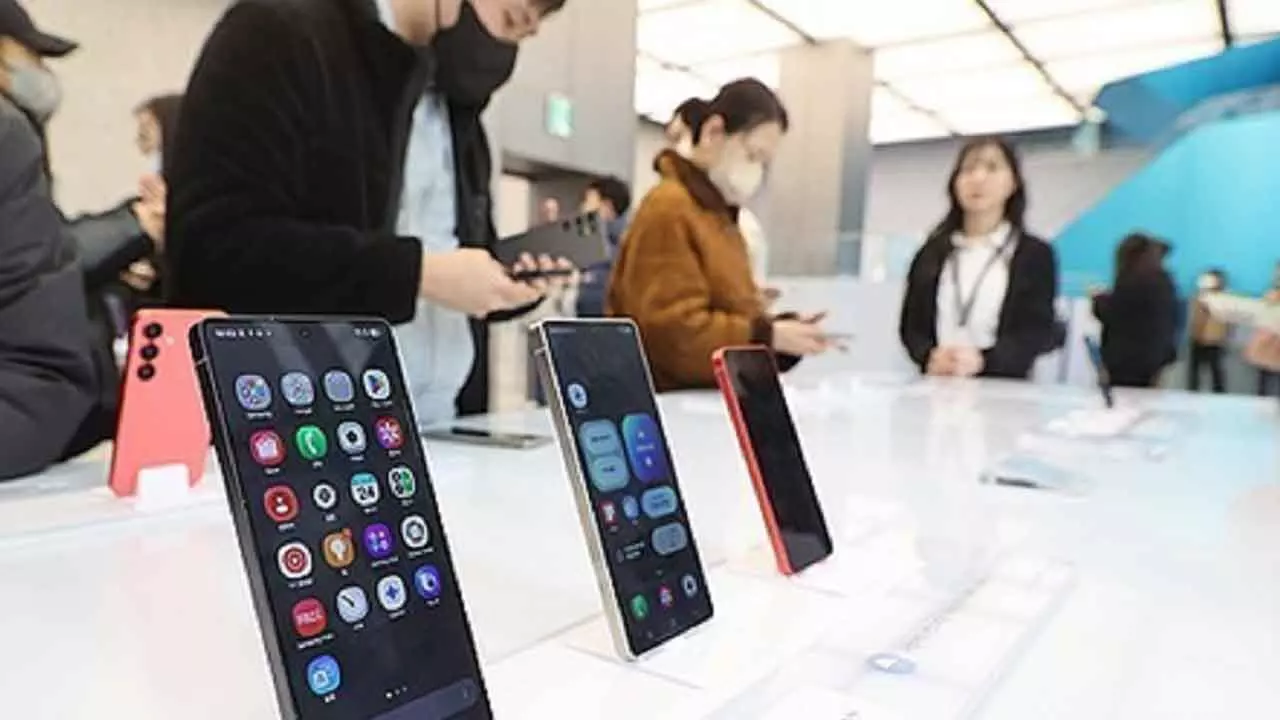10 Samsung Galaxy Settings That Will Transform Your Phone
Unlock hidden features and customization on your Samsung Galaxy device. Improve speed, privacy, and usability with these essential settings.
image for illustrative purpose

Samsung's One UI 7 still remains at the top of the Android interfaces that are user-friendly, providing speed, responsiveness and comfort of use. The default configuration is fine but setting your device according to your needs can significantly improve performance and usability. In this article, we present the most important settings that impact the functionality and privacy of your Galaxy phone.
1. Disable Pop-Up Notifications
Pop-up notifications can easily disturb reading, messaging or browsing. A large part of the users prevails to handle alerts in a distraction-free way. Access the path Settings > Notifications > Notification pop-up style > Apps to show as brief > Toggle off All apps to stop unexpected interruptions from occurring.
2. Enable Gesture Navigation
Samsung phones are usually shipped with a three-button navigation system. Users looking for a more natural method, on the other hand, will find the gestures to ease the transition between apps. This can be activated via Settings > Display > Navigation bar > Swipe gestures which allow swipes instead of buttons to navigate.
3. Maximize Screen Resolution
Stunning high-resolution displays, particularly in the case of Galaxy S25 Ultra, give sharper visuals and better color fidelity. The default settings may not apply to QHD+, so navigate to Settings > Display > Screen resolution to experience all the quality of a display. This change will consume battery very slightly due to the great efficiency of the hardware used in the device.
4. Customize Side Key Function
The power button, which was usually called the traditional power button, is now replaced by a side key that has smart assistant functionalities. However, users can choose this option to open the power menu only, thereby avoiding Bixby or other assistants. Go to Settings > Advanced features > Side button > Long Press > Power off menu to change this setting.
5. Adjust Lock Screen Notifications
The default setting of One UI 7 is to show notifications on the lock screen using icons instead of cards. However, users can switch to the card view for better readability, and at the same time, they can enhance privacy by not displaying content that is sensitive. To get there, go to Settings > Notifications > Lock screen notifications > Cards and select Hide content, if necessary.
6. Create or Sign In to a Samsung Account
Having a Samsung account is the best way to get integration among devices and services such as Samsung Wallet, Galaxy Store, etc. Besides, it enables users to easily transfer the data between phones when switching over. Registration is suggested for users who would like to have access to Galaxy Themes, apps, and all other benefits of the ecosystem.
7. Install Good Lock App
The Good Lock app gives a wide range of customization and it even includes one-handed operation, gesture shortcuts, and personalized home screens. Get it from the Galaxy Store and you can use it to find out about the Home Up module that improves swipe gestures and quick access to settings.
8. Remove Unnecessary Apps
It is quite common that some apps already on a Galaxy device when it is bought might be of no use to the buyer at all. One can very well uninstall or disable apps like Samsung TV, Microsoft Copilot, Facebook, Samsung Tutor, or OneDrive just to name a few and in that way get not only more storage space but also a more organized device.
9. Personalize Home Screen Layout
Changing the arrangement of the icons and adding widgets can eventually make the interface a lot more efficient. One of the ways users can do that is by turning in the 5x5 icon grid, modifying the Calendar transparency, and applying wallpaper color palettes to system icons. To do this, go to Wallpaper and style > Color palette to make these visual changes.
10. Optimize Always-On Display
With the help of the Always-On Display, one can easily see important information such as date, time, and notifications at a glance. Through Settings > Lock screen and AOD > Always-on Display, one can change from Tap to show to Always for continuous visibility. Moreover, the user can select a plain black screen to save battery power.
Bonus: Revert Notification Panel Layout
The elegant new notification panel of Samsung imitates iOS style. It separates Quick Settings and notifications by swipe direction. However, users who like the older combined layout can easily switch it back by Swipe down from the top right > Pencil icon > Panel Settings > Together, revealing the classic view and customizable quick settings.
Switching to Google Keyboard and sorting app icons alphabetically in the home drawer are some of the other changes that can be made for faster navigation. These Samsung Galaxy phones can provide an optimized, highly functional experience with the changes made, while still having One UI 7’s reliability and efficiency.

